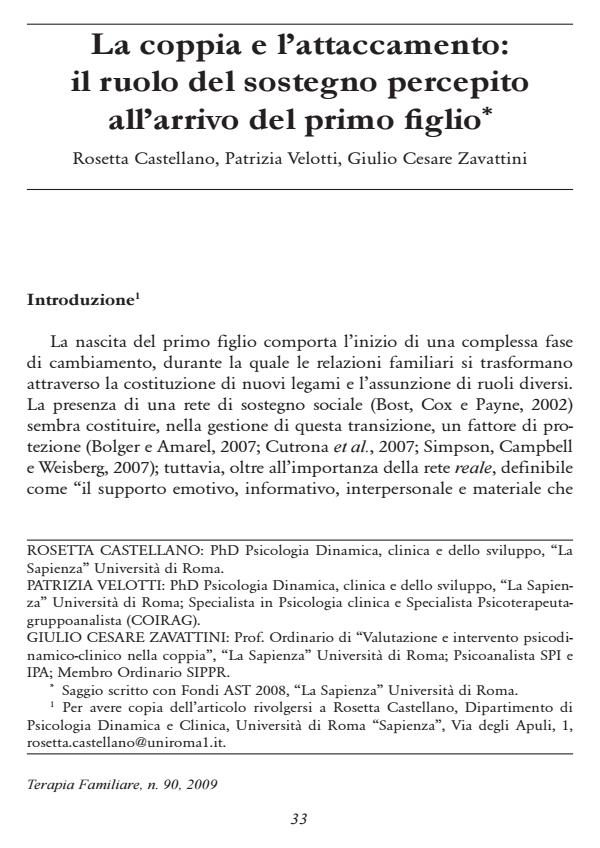La coppia e l’attaccamento: il ruolo del sostegno percepito all’arrivo del primo figlio
Journal title TERAPIA FAMILIARE
Author/s Rosetta Castellano, Patrizia Velotti, Giulio Cesare Zavattini
Publishing Year 2009 Issue 2009/90
Language Italian Pages 19 P. 33-51 File size 294 KB
DOI 10.3280/TF2009-090002
DOI is like a bar code for intellectual property: to have more infomation
click here
Below, you can see the article first page
If you want to buy this article in PDF format, you can do it, following the instructions to buy download credits

FrancoAngeli is member of Publishers International Linking Association, Inc (PILA), a not-for-profit association which run the CrossRef service enabling links to and from online scholarly content.
La coppia e l’attaccamento: il ruolo del sostegno percepito all’arrivo del primo figlio - This study examines the role of social support in the couples of new-parents and assesses the influence of attachment models on it. The Adult Attachment Interview (AAI), the Current Relationship Interview (CRI), and the Multidimensional Scale of Perceived Social Support (MSPSS) were administered to a sample of 100 participants. Results indicated a perception of social support more pronounced in women, mainly on the dimension of social support derived from the partner. Furthermore, for women and not for men, an association between attachment models to the AAI ("generalized") and the different perceptions of social support was revealed. On the contrary, attachment models to the CRI ("specific") didn’t show any significant difference of social support perceived at childbirth.
Key words: generalized attachment, specific attachment, perceived social support, couple, parenthood, received social support
Parole chiave: attaccamento generale, attaccamento specifico, supporto sociale percepito, coppia, genitorialità, supporto sociale ricevuto.
Rosetta Castellano, Patrizia Velotti, Giulio Cesare Zavattini, La coppia e l’attaccamento: il ruolo del sostegno percepito all’arrivo del primo figlio in "TERAPIA FAMILIARE" 90/2009, pp 33-51, DOI: 10.3280/TF2009-090002